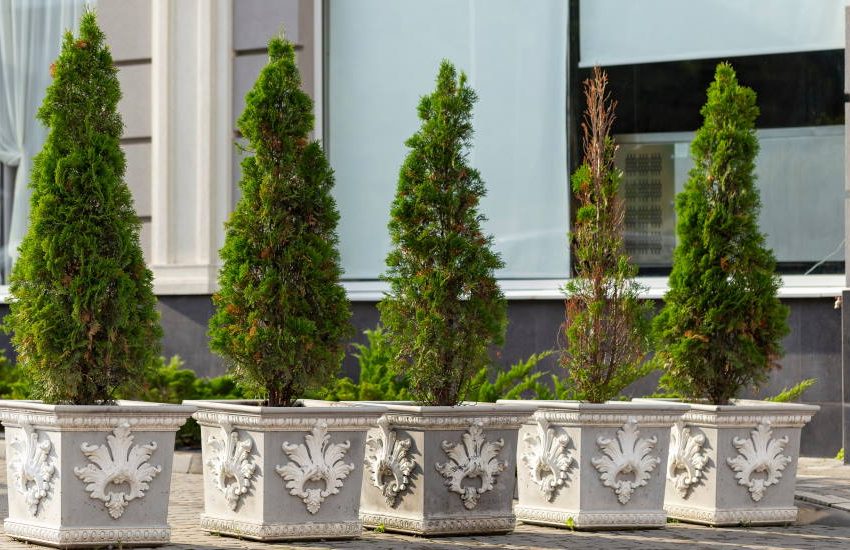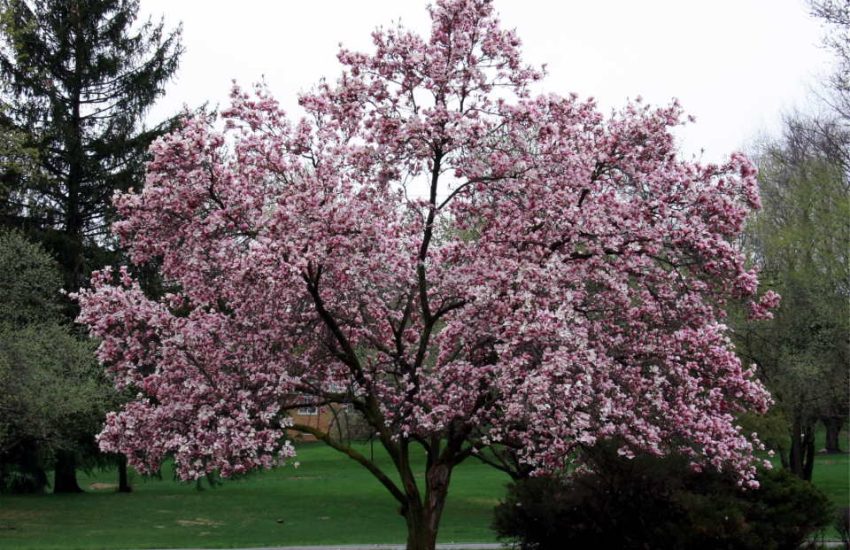Hoya Burtoniae – Care & Propagation [Best Tips & Tricks 2025]
Are you considering adding a Hoyas Burtoniae to your garden? This beautiful, unusual plant can be a great addition to any garden, but proper care is necessary for optimal growth.
In this post, we’ll provide tips on how to grow and care for Hoyas Burtoniae, as well as information on common problems that can occur. Read on to learn more!
What is Hoya Burtoniae?
The Hoya burtoniae is a native plant to the Philippines. It is a vining plant that has evergreen leaves that are shaped like almonds and have a velvety texture.
This plant is sometimes referred to by its abbreviated name, Hoya Sp Aff Burtoniae, which stands for Hoya Species Affinity Burtoniae.
The Hoya burtoniae has blooms that are a dark pink color and occasionally have a reddish tint, but the centers of the blossoms are always yellow.
Hoya BurtoniaeCare & Growth Guide
Sunlight
Hoyas Burtoniae likes bright light that isn’t direct.
If the plant’s leaves start to turn yellow, it’s getting too much direct sunlight. On the other hand, if the plant’s leaves are dark green or look dull, it means that it is not getting enough light.
Temperature
The average room temperature for Hoyas Burtoniae should be 70 degrees Fahrenheit.
They can handle temperatures that are a little higher or lower, but big changes should be avoided. If it gets below 50 degrees Fahrenheit, the plants might go to sleep.
Watering
When the top inch of soil on a Hoya Burtoniae feels dry to the touch, it needs water. Root rot can happen if you water a plant too much, so make sure the pot has good drainage.
These plants like it when it’s humid, so misting them often can help. Putting the pot on a pebble tray or humidifier is also a good idea.
Under-watering
Your plant’s soil should be completely dry before you water it again. Do not let it dry out completely, as this can stunt the plant’s development and alter its appearance.
You can tell if your plant needs water by looking at its leaves. Signs of shriveling and wrinkling are an indication that your plant needs water. If you see that your Hoya burtoniae is drooping, you should treat it the same way.
Over-watering
The good news is that if you water a Hoya burtoniae after it has gone without water for a while, it will quickly recover to its previous healthy state.
Be careful not to overwater this plant, as it can die if it gets too much moisture.
The plant’s epiphytic nature means that its roots benefit from being exposed to air frequently. Root rot can develop on the plant if it is submerged in water for too long.
Fertilizing
During the growing season, a balanced fertilizer should be used to feed Hoyas Burtoniae every two weeks. Once the plant has gone to sleep, you should only fertilize it once a month.
Pruning
Hoyas Burtoniae doesn’t need to be pruned, but it can be helpful if you want to control the size or shape of the plant. If you want to prune the plant, it’s best to do so after it has flowered.
Soil
If you’re going to grow Hoya burtoniae in a container, choose potting soil that drains well. This is potting soil that will drain well, preventing your plant from drowning.
Keep in mind that the potting soil shouldn’t drain too quickly or your plant might not get enough water after being watered.
Humidity
Hoya Burtoniae enjoys humidity, so it’s a good idea to mist the plant often. You can also put the pot on a pebble tray or use a humidifier to increase the humidity around the plant.
Re-Potting
When your plant outgrows its container, it’s time to re-pot it. Repotting Hoyas Burtoniae is best done in the spring, but it can be done year-round.
When it’s time to repot your Hoya Burtoniae, pick a container that’s just a tad bigger than the one it’s now in. Choose potting soil with good drainage.
Take care to keep the root ball moist in the days leading up to repotting. To re-pot your plant, carefully take it out of its current container.
Fill up any holes with potting soil and plant it in the new pot. Make sure the plant gets plenty of water and is kept in indirect sunlight.
How to Propagate Hoya Burtoniae Plan?
Hoyas Burtoniae can be propagated by rooting stem cuttings in water or potting soil.
You need a healthy 5-inch stem with at least three leaves. Remove lower leaves to expose lower nodes. From these nodes, roots will grow.
If you’re propagating with water, cover the nodes.
Underwater leaves decay. Warm, humid, indirect light should be provided to the plant’s container. A week later, tiny white roots should sprout.
Root density and length should increase after four weeks. Once the cuttings reach 2 inches, repot them in well-draining soil. If you don’t want to transfer stem cuttings from water to soil, start with potting mix.
Related Articles
* Piper Ornatum Care
* ](https://plantnative.org/gardening/philodendron-dark-lord-vs-black-cardinal/)[Anthurium Villenaorum Care
* Dischidia Ovata Care
* Anthurium Wendlingeri Care
* Anthurium Pedatoradiatum Care
Common Issues for Hoya Burtoniae
Thin or wrinkling leaves
Thin or wrinkling leaves are also a sign of dehydration. If you see these symptoms, water your plant immediately and make sure the pot has drainage holes to prevent root rot.
Brown or black leaves are a sign of too much sun exposure. Move your plant to a shadier spot and make sure it’s not in direct sunlight.
Pests
Mealybugs, spider mites, and scale are all pests that can infest Hoya Burtoniae.
Small, white bugs known as mealybugs feed on nectar from plants. One way to manage them is to use an alcohol-soaked cotton swab to remove them.
The undersides of leaves are home to small spiders called spider mites. Spraying the plant with water or applying a natural insecticide will help get rid of them.
Tiny brown insects are known as scale feed on plant sap. Using water as a spray or a natural insecticide can help get rid of them from a plant.
Diseases
Fungal diseases including powdery mildew and leaf spot are common on Hoya Burtoniae.
Symptomatic of a fungal infection, powdery mildew appears as a white powder on plant leaves and stems. By applying a fungicide spray to the plant, it can be prevented.
A brown or black patch on a plant’s leaves is called a leaf spot. Spraying the plant with a fungicide will help prevent the disease.
Vines dying back
If the vines of your Hoya Burtoniae are dying back, it’s a sign that the plant is not getting enough water. Make sure you’re watering the plant regularly and that the pot has drainage holes to prevent root rot.
Hoya Burtoniae care can seem daunting at first, but with a little patience and effort, you’ll have a healthy and beautiful plant.
Conclusion
The red clustered blossoms of the Hoya burtoniae produce an enticing aroma that brings any indoor space to life.
Additionally, the lengthened leaf braid improves the visual appeal of the swinging inside. However, Hoya burtoniae necessitates particular tending for optimal development.
If you’ve read this whole essay, though, I think you have a good idea of how to care for your Hoya burtoniaes. Have fun in your garden!
FAQs
Question
How often do you water a Hoya Burtoniae?
Answer
Hoya Burtoniae and Hoya Bilobata are different species with distinct leaf shapes and flower colors. H. Burtoniae has thick, waxy leaves and pink flowers, while H. Bilobata has smaller, pointed leaves and white or pale pink flowers.
Question
“Hoya Burtoniae vs Bilobata: what are the differences?”
Answer
Hoya Burtoniae has a sweet, honey-like fragrance that is most noticeable in the evening when its flowers bloom.
Question
What does Hoya Burtoniae smell like?
Answer
To root Hoya Burtoniae, take stem cuttings and place them in a well-draining potting mix. Keep them warm and moist until roots develop, then transplant to a larger pot.
Question
How do you root Hoya Burtoniae?
Answer
Hoya burtoniae is considered a slow-growing plant, it may take a while to see significant growth.


